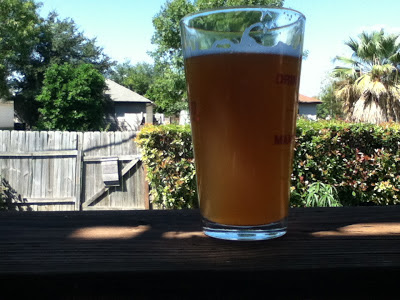Ah, pumpkin. Ah, Halloween. Halloween pumpkin. Ah. Yes.
Here's what I came up with from my handy brew closet supply:
3 gallon batch
1 whole roasted pumpkin pie pumpkin (about 2 1/3 pounds, cleaned, in this case)
2 pounds of red wheat malt
8 ounces of 2-row
8 ounces of caramunich
8 ounces of piloncillo sugar
2 ounces of carafa i
2 ounces of quaker quick oats
.8 ounces of Styrian Celeja hops @60
.2 ounces of Styrian Celeja hops @30
1 teaspoon of pumpkin pie spice blend (in this case, McCormick's brand. I did a good strong amount because the container is years old. Were this a fresh batch of homemade stuff, I'd use 1/3 of a teaspoon!)
1/2 teaspoon of Chinese Five Spice (in this case, a homemade blend, about a year old, containing fennel, star anise, clove, szechuan peppercorn, and cinnamon)
Things I did differently this time:
I used 3.75 gallons of storebought spring water to fill my kettle, this time. I want to see if I can isolate either the water or the sanitation process. I kept my sanitation the same, with the bleach and the rinsing of bleach. Let's see if it is (as I suspect) likely coming from the hard, chlorinated San Antonio tap water.
I've had good results with overnight mashing, and I'm going to keep doing it, for now, until I can get a refractometer. I've ordered one, but it is not here, yet.
So, I got my strike water up to 175 degrees, doughed in with my fresh crushed grain and pumpkin, and got the temperature up to about 155. Then, I placed my kettle in a pre-heated oven at 170 degrees. I flipped the oven off, went to bed, and did the rest of the boil in the morning. Simple.
Pumpkin. I love pumpkin. I could take a cured cinderella pumpkin, slice it up like fine cheese and eat it raw. I could make pumpkin bread, and pumpkin alcohol, and pumpkin cinnamon rolls... I love pumpkin!
How do you process a pumpkin for homebrew if you don't have a food processor? Ours was dirty, and I was too lazy to clean it, so I had to find a different way. I put the roasted pumpkin in a plastic bag, and smashed it up with my hands, crushing it inside of the plastic bag into a gooey paste. It was clean and easy to work with, and seemed to lead to good conversion in the kettle. Time will tell. Time will tell. Refractometer en route.
Anyway, the wise pumpkin says dunkel, because yeast should have a flavor, and the spicy, fruity German yeast will complement the spicy, fruity pumpkin brew. It will not be another commercial amber pumpkin ale. (I could buy that in the store, if I wanted it!) It will be something I haven't seen out and about. And, my hope is that the piloncillo and caramunich will impart a rich caramel flavor to go with the pumpkin and the spice. Caramel pumpkin is a wise combination, no?
Pictures:





















































